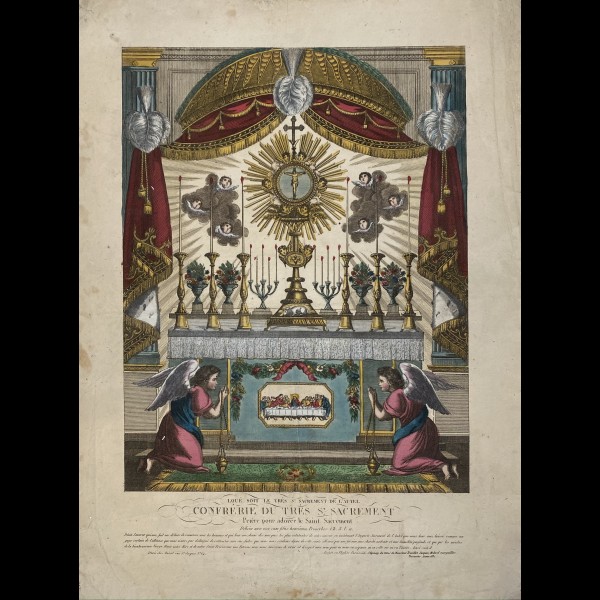BASSET PAUL-ANDRE ( 17??-184? )
CONFRERIE DU TRES ST. SACREMENT
Very fresh colors; Two median folds, spots and small holes, flexible handling folds in the large margins; Inv.INHA: OB 2 (56) which is another proof of this print; Only the names of the churchwardens and the dates differ from 1835 and / or 1831 in the case of our proof. At the start of the 17th century, the rue St-Jacques became the seat of the engravers and merchants of small intaglio religious images introduced by the Antwerp engravers in Paris. Among the successive dynasties of printmakers, the Bassets were certainly among the most active and productive in the second half of the 18th century, of course publishing religious images, but also optical views and portraits. .. Among the members of this family: André Basset - known as Basset le Jeune - active from around 1750 to 1785 at the corner of rue des Mathurins with the sign of Saint Geneviève. and his son Paul-André Basset, who followed his father until 1833. Parisian cut-outs serve in turn as a model for provincial imagiers for the production of xylographed images. The relations between the imagiers of Orleans and those of Paris in the 18th century are well known. Basset was also the agent and supplier for Hoyau in Chartres. (cf. the 2009 exhibition : "Neither quite the same, nor quite another", Musée de l'image d'Epinal)..
180.00 €

